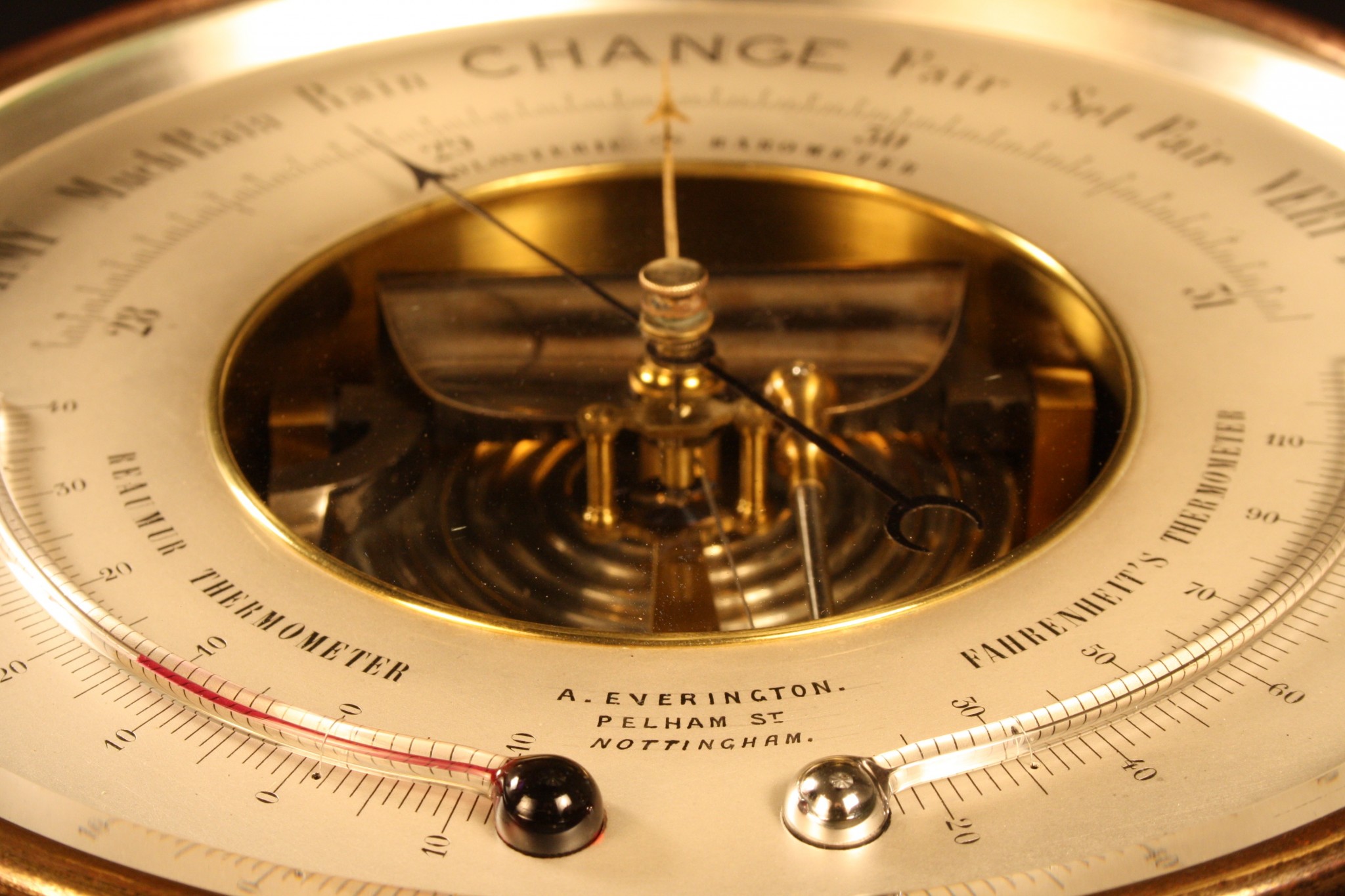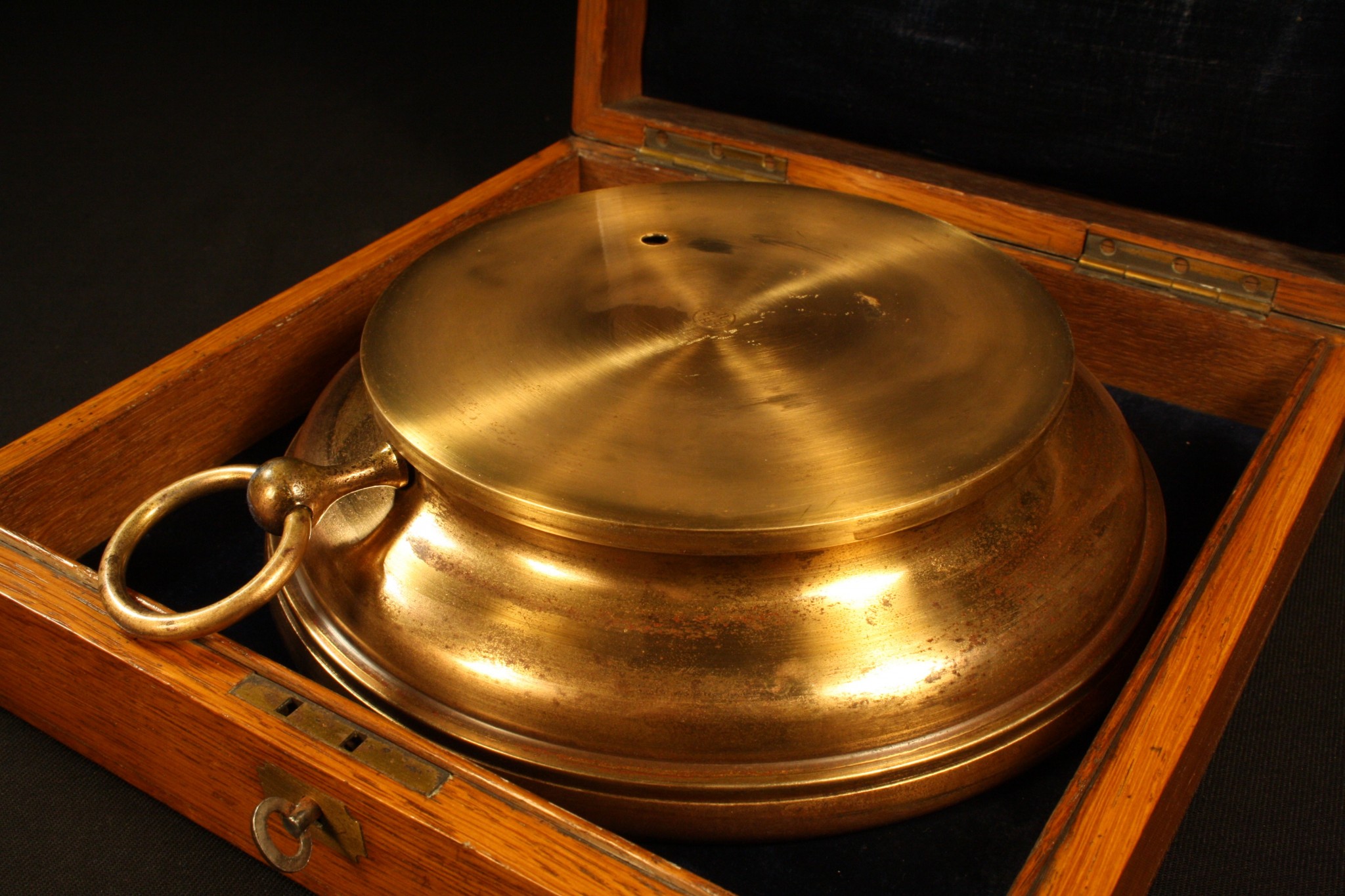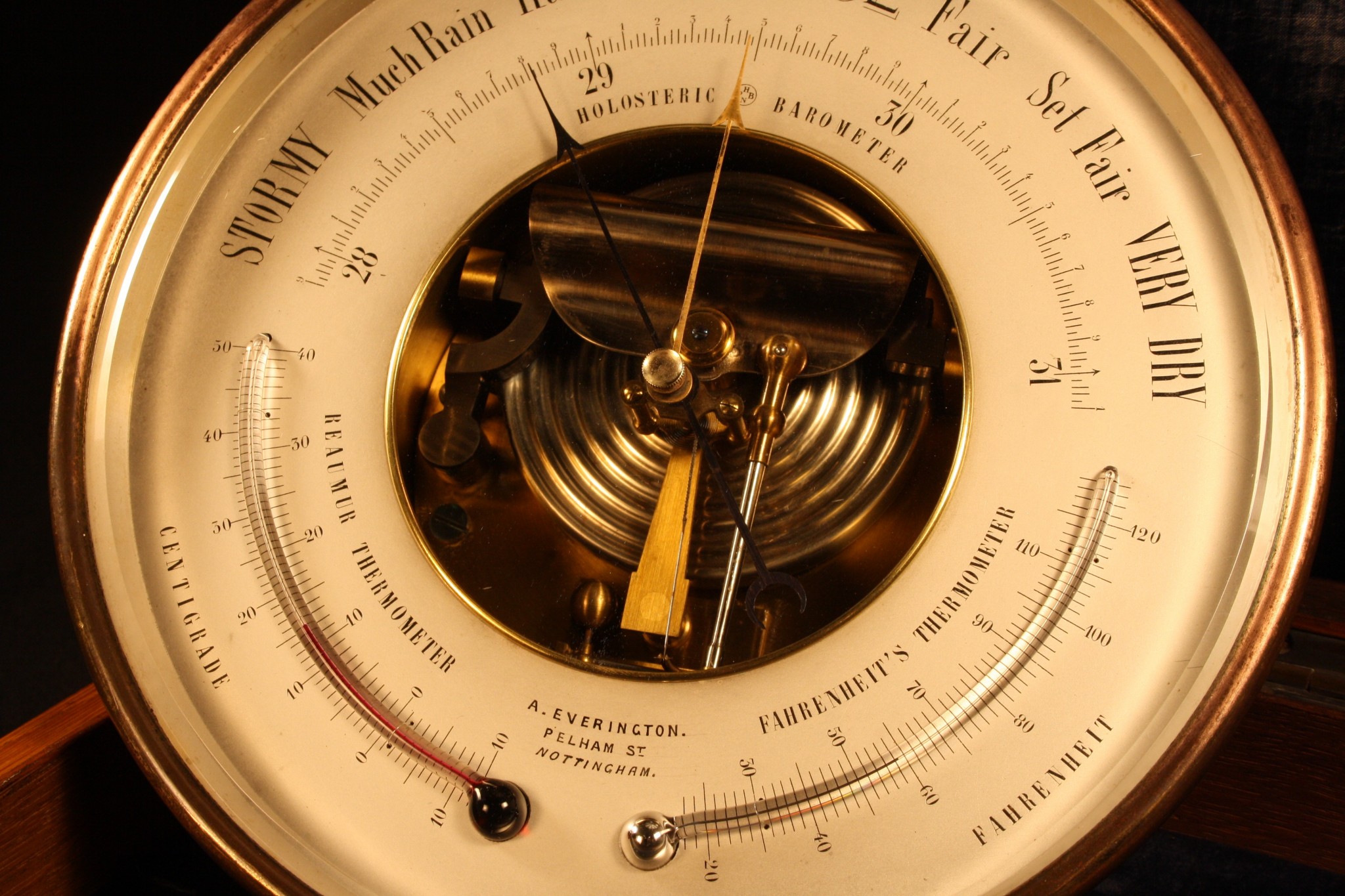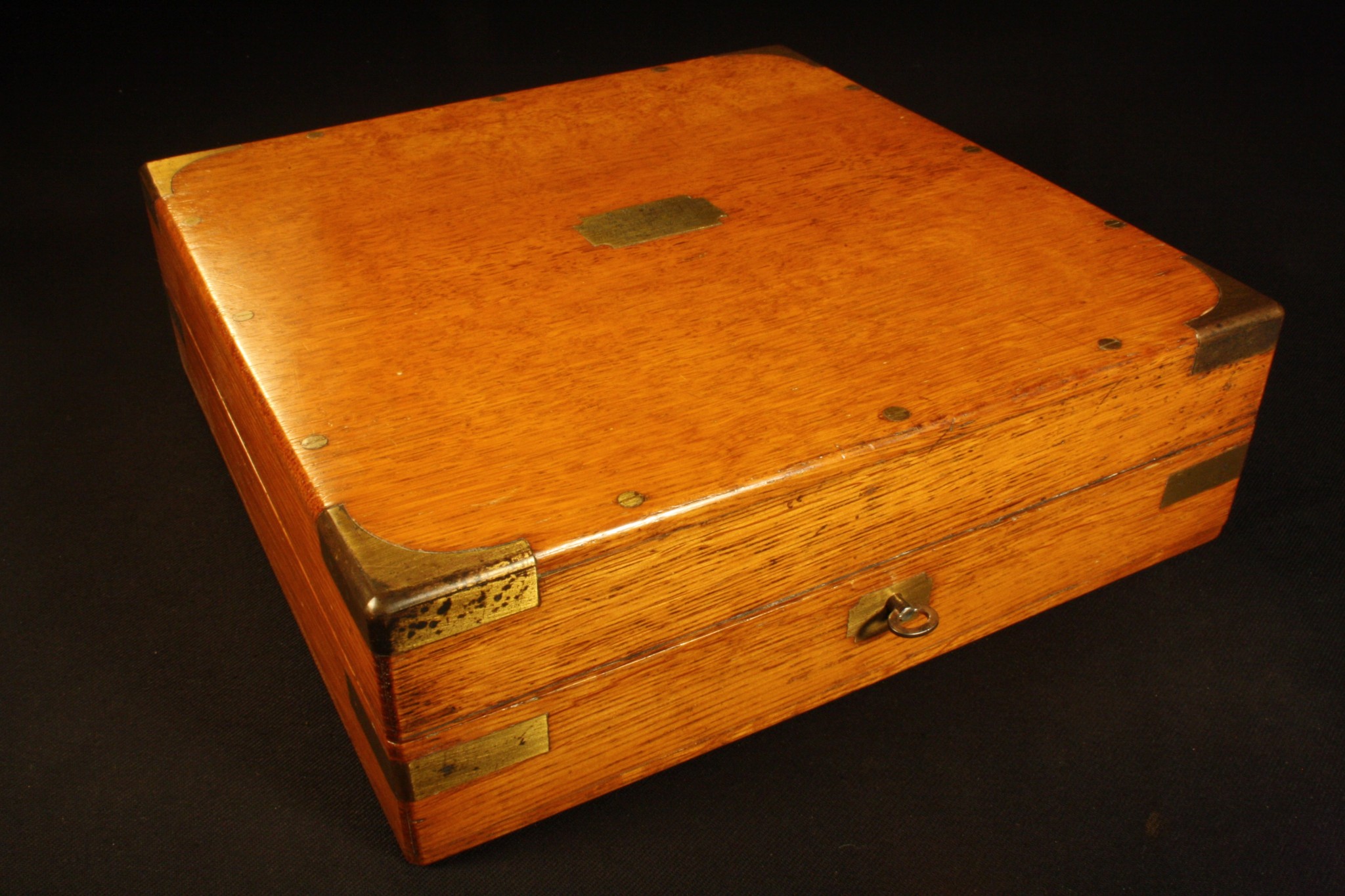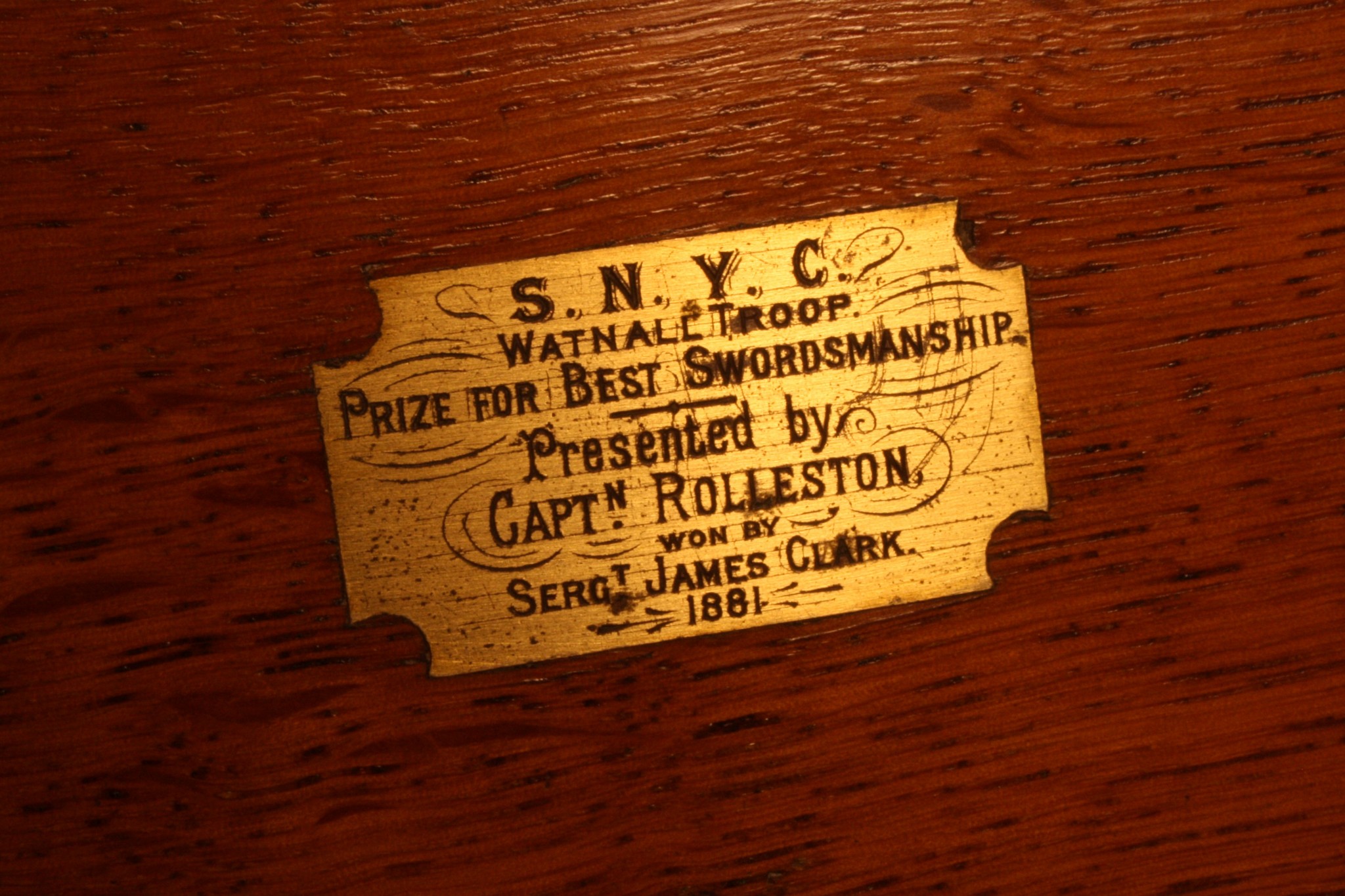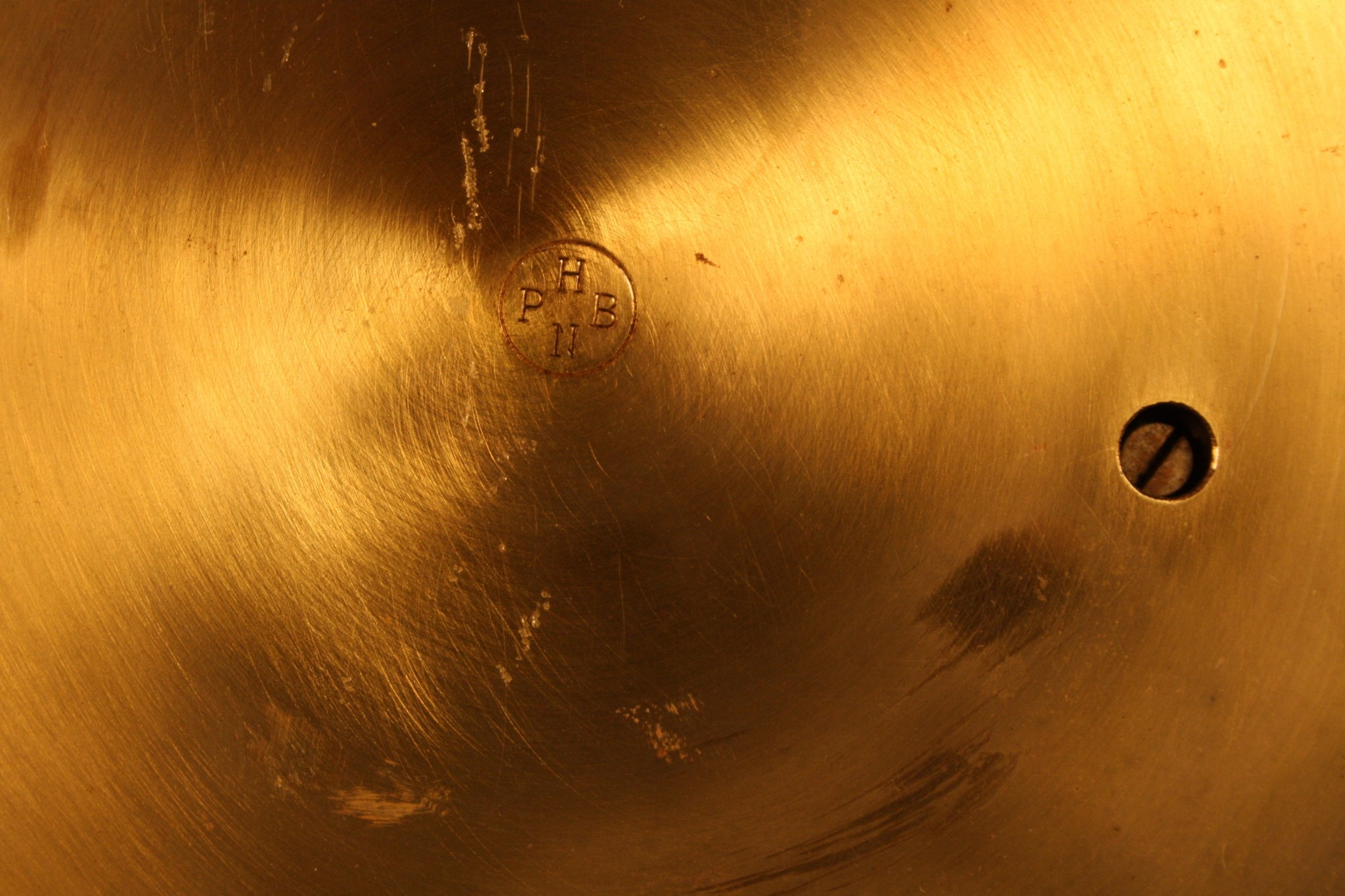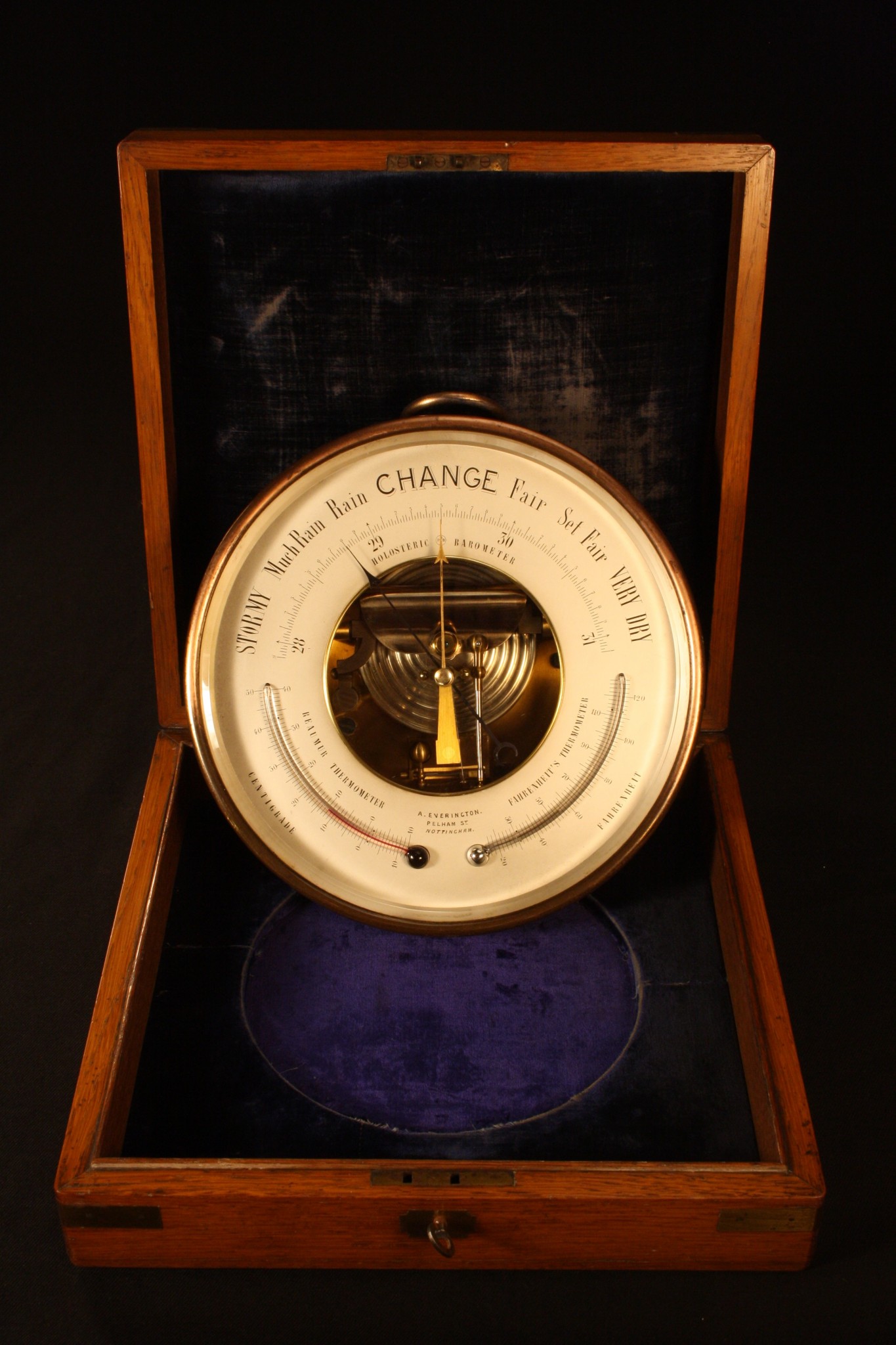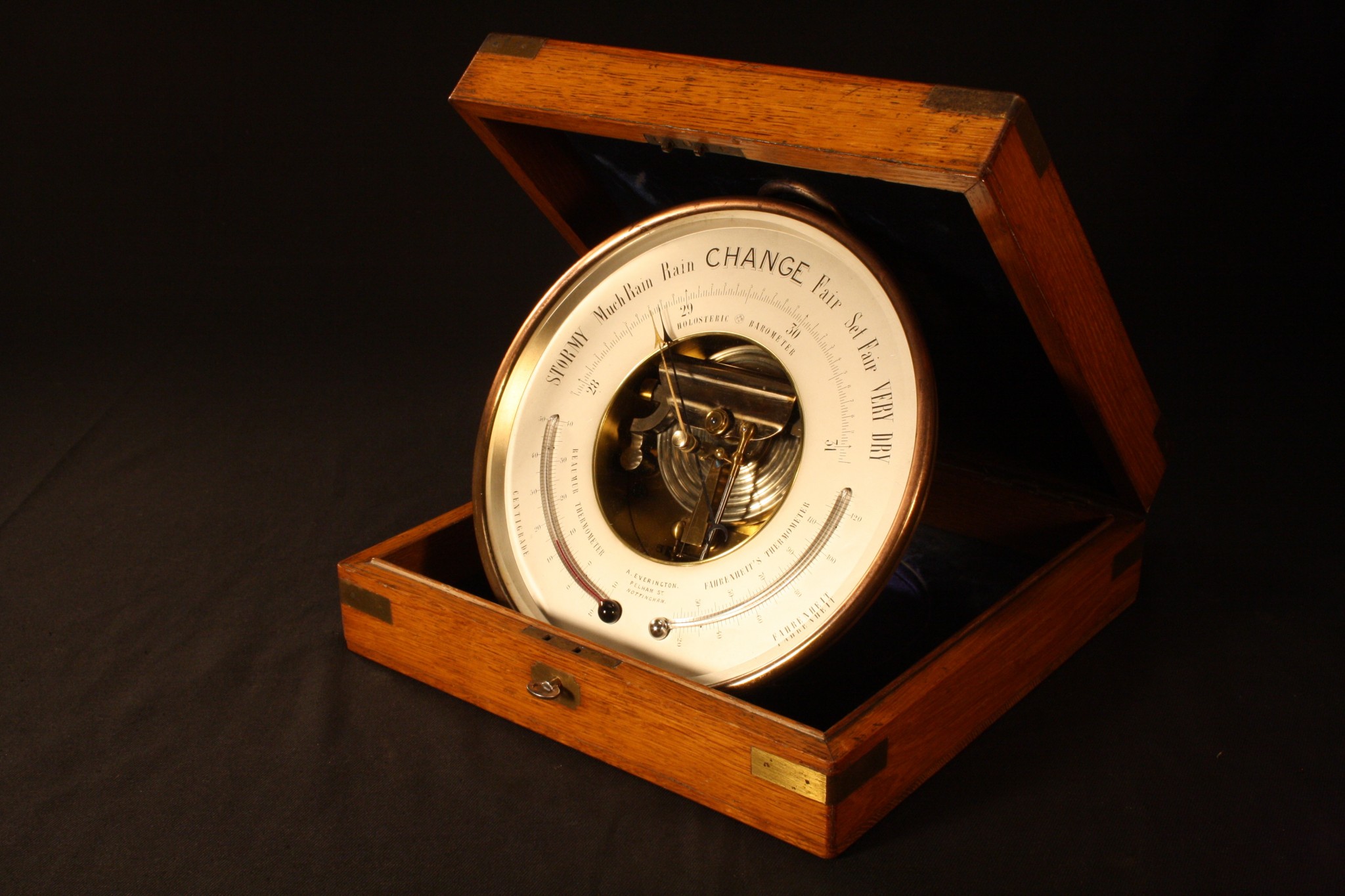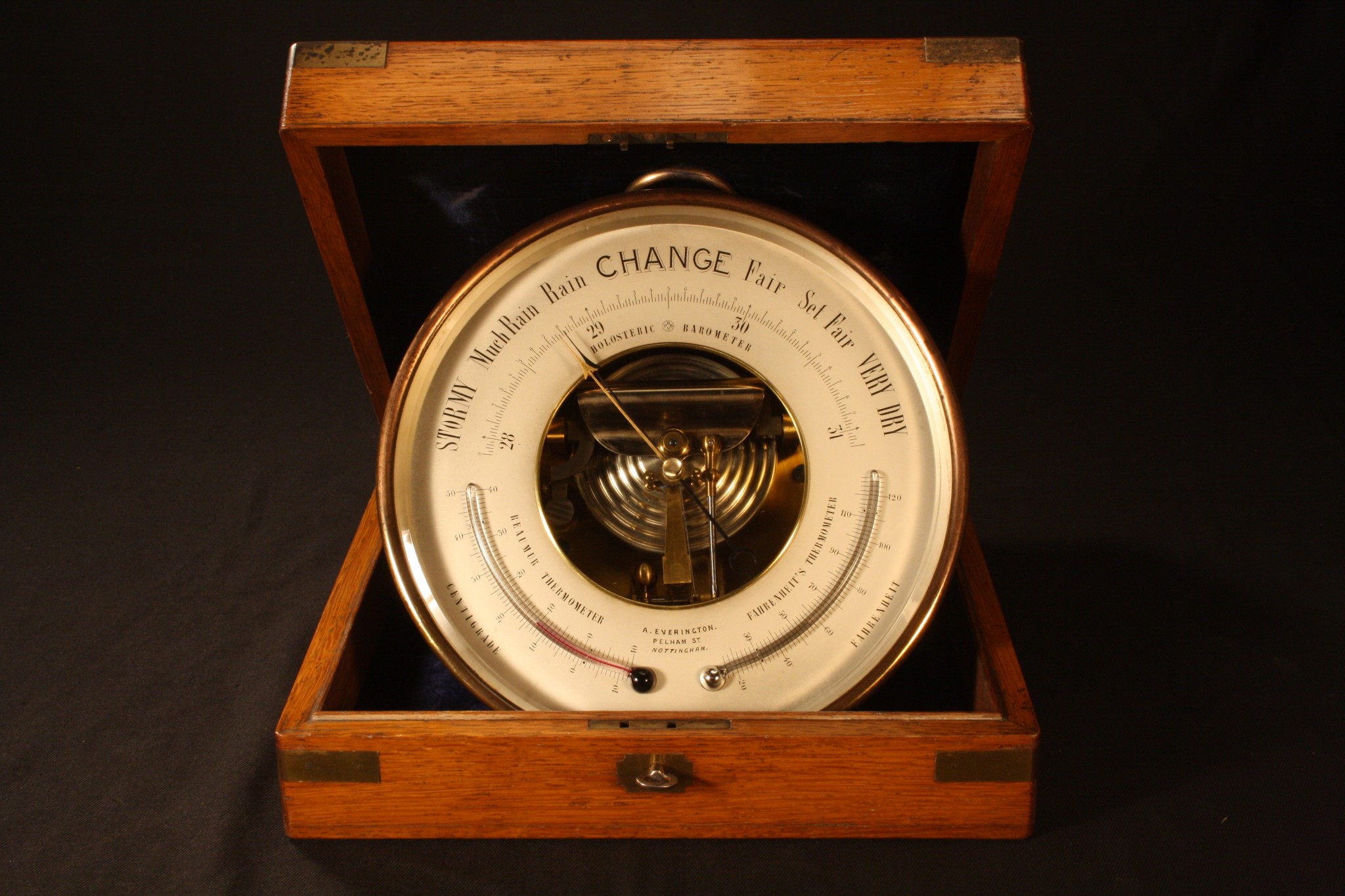Large Presentation Barometer by Pertuis Hulot Naudet c1880 – SOLD
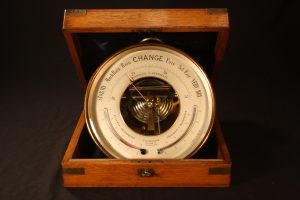 Large presentation barometer with engraved and silvered 8” brass dial, the upper portion marked “Stormy,” “Much Rain,” “Change,” “Fair,” “Set Fair” and “Very Fine” and having semicircular barometric scale annotated 28-31 inches of mercury, also annotated “Holosteric Barometer” (constructed without the use of liquids, i.e. mercury – “Holosteric Barometer” is the phrase coined by this manufacturer for their aneroid barometers ). The lower portion with twin curved thermometers: to the left a red spirit thermometer, annotated “Reaumur Thermometer” above and “Centigrade” below, having twin corresponding scales, the upper scale -10 to 40 degrees (Reaumur), the lower scale 10 – 50 degrees (Centigrade); to the right, marked “Fahrenheit’s Thermometer,” a mercurial thermometer with single scale marked above and below the tube 20 – 120 degrees (Fahrenheit). The dial open to the centre, affording visual inspection of the single capsule movement having 3” capsule, highly-polished C spring and associated components contained within a lacquered brass well. Blued-steel pointer, gilt brass telltale set to heavy bevelled glass. Turned pillar with large suspension ring. The case rear with compensation adjustment port and screw set at 4 o’clock, and “PHBN” trademark to centre.
Large presentation barometer with engraved and silvered 8” brass dial, the upper portion marked “Stormy,” “Much Rain,” “Change,” “Fair,” “Set Fair” and “Very Fine” and having semicircular barometric scale annotated 28-31 inches of mercury, also annotated “Holosteric Barometer” (constructed without the use of liquids, i.e. mercury – “Holosteric Barometer” is the phrase coined by this manufacturer for their aneroid barometers ). The lower portion with twin curved thermometers: to the left a red spirit thermometer, annotated “Reaumur Thermometer” above and “Centigrade” below, having twin corresponding scales, the upper scale -10 to 40 degrees (Reaumur), the lower scale 10 – 50 degrees (Centigrade); to the right, marked “Fahrenheit’s Thermometer,” a mercurial thermometer with single scale marked above and below the tube 20 – 120 degrees (Fahrenheit). The dial open to the centre, affording visual inspection of the single capsule movement having 3” capsule, highly-polished C spring and associated components contained within a lacquered brass well. Blued-steel pointer, gilt brass telltale set to heavy bevelled glass. Turned pillar with large suspension ring. The case rear with compensation adjustment port and screw set at 4 o’clock, and “PHBN” trademark to centre.
The whole contained within its original brass-bound lacquered oak presentation case lined in blue velvet, presentation plaque to lid engraved “S.N.Y.C., Watnall Troop, Prize for Best Swordsmanship, Presented by Captn. Rolleston, won by Sergt. James Clark, 1881.”
Pertuis, Hulot, Naudet et Cie, the manufacturer, is regarded as being one of the world’s very finest makers of such barometers – the detail and quality here testify very well to that reputation. Surviving in very good original condition – clearly little displayed, the red spirit in the Reaumur thermometer retaining its deep red colour (most are bleached transparent by sunlight), brass case retaining a good proportion of original finish and colour with patination, the rear re-lacquered, the movement in fine condition showing excellent transition and sensitivity. The oak case with some losses to velvet lining, the brass fittings with much original colour, some patination, working lock and key.
A very unusual item combining that illusive mix of quality, condition and rarity, in its day this was a very expensive ‘state of the art’ instrument. Awarded as a prize for swordsmanship, one can only guess at the prowess of the recipient! This presentation barometer is very much a collector’s piece.
Dimensions: 10″ wide x 10″ deep x 3″ high
Stock No: BA0224
Price: SOLD
Naudet, Pertuis, Hulot et Cie
The firm of Naudet, Pertuis & Hulot began to manufacture high quality aneroid 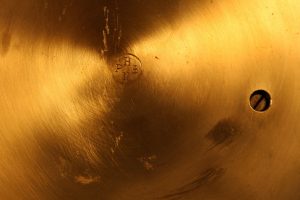 barometers and barographs in Paris in 1860, and is still in business today as Naudet. The workshops have been located in Perreux-sur-Marne since 1965.
barometers and barographs in Paris in 1860, and is still in business today as Naudet. The workshops have been located in Perreux-sur-Marne since 1965.
The company’s trademark is the cipher “PNHB”, formed of the initials of the surnames of the company’s founders, Pertuis, Naudet and Hulot, and ‘Baromètres.’ Paul Naudet was France’s premier barometer maker of the second half of the 19th century. The company gave its aneroid products the unique label ‘holosteric’ barometers and, over the years, PNHB also came to represent ‘Paul Naudet Baromètres Holostérique.’
Sir Lancelot Rolleston
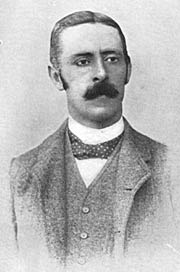 Soldier, sportsman and public servant, Sir Lancelot Rolleston was one of Nottinghamshire’s most distinguished figures for more than 90 years.
Soldier, sportsman and public servant, Sir Lancelot Rolleston was one of Nottinghamshire’s most distinguished figures for more than 90 years.
Educated at Wellington College and Christ Church College, Oxford, he first donned the uniform of the South Notts Yeomanry Cavalry in 1868 and rose to become honorary colonel by 1896.
In 1900, he led the 3rd Regiment of Imperial Yeomanry against the Boers and while attempting to rescue 500 British prisoners. During the charge, he was shot, the bullet breaking his arm before exiting through the side of his body. Sir Lancelot’s wife, Lady Maud Rolleston, who was in South Africa helping to establish a convalescent home for soldiers, rushed to the front to care for her husband until he was invalided home. But Sir Lancelot returned to duty, resuming command of the regiment and, by the time he retired in 1912, was among the most decorated of local soldiers.
His awards included the Order of the Bath, Distinguished Service Order, plus several campaign and other medals. They were bought after his death by the South Notts Hussars museum, where they are on display, along with a magnificent portrait in oils.
Away from the army, he held many offices, including Deputy Lord Lieutenant and High Sheriff, and chairman of Notts County Council and the Notts Quarter Sessions.
He was also county commissioner for the Boy Scouts for 31 years. At a Notts scouts council meeting in 1940, Sir Lancelot finally retired from the position. He was 93. The Duke of Portland said: “I believe he is the oldest scout in the world, and the best. A most loyal heart-and-soul supporter of the movement.”
SNYC Watnall
A Short History of The South Nottinghamshire Hussars Yeomanry
The Yeomanry was raised in 1794 to help maintain law and order at a time when 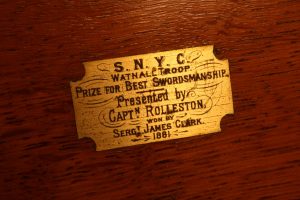 Revolutionary France, with its egalitarian ideals, threatened the security of an England governed by landed gentry in an age of industrial and political ferment, and having no police force.
Revolutionary France, with its egalitarian ideals, threatened the security of an England governed by landed gentry in an age of industrial and political ferment, and having no police force.
The Nottingham Town Troop was raised in that year, and its first ‘engagements’ were to help suppress food riots in Nottingham in 1795 and 1800, and the dispersal of Luddite rioters in 1811. Other troops were raised at Holme Pierrepont and Bunny in 1799, and at Woollaton and Watnall in 1817.
The troops were regimented in 1826 as the Southern Regiment of Nottinghamshire Yeomanry Cavalry and became known as the South Notts Hussars informally around 1877 and formally in 1903, the Acorn cap badge having replaced the ‘SNYC’ monogram in 1898.
Source: The Queen’s Royal Lancers and Nottinghamshire Yeomanry Museum
A. Everington was a watchmaker and jeweller at 5 Pelham Street, Nottingham.
FOR MORE INFORMATION ABOUT THIS ITEM, PLEASE CALL +44 (0)1584 841210 OR COMPLETE AND RETURN THE FORM BELOW
